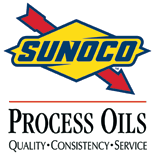![[ Visit ACS Rubber Website ]](images/logo.jpg) |
|
Centennial Elite SponsorsBecome a Centennial Elite Sponsor |
Crosslinks in RubberWednesday, May 6, 2009: 10:30 AM
Akron/Summit Ballroom (Akron/Fairlawn Hilton Hotel)
ABSTRACT
Crosslinks in Rubber By William L. Hergenrother Vulcanization is the fundamental technology of the Rubber Industry. Although elastomers have been cured for well over 100 years, the exact details of the mechanism and structures produced have not been identified due to the difficulties of analyzing the insoluble crosslinked structure. The relative degree of crosslinking has traditionally been determined by swelling. However, the actual concentration of chemical crosslinks per polymer chain has been a more difficult task, because of trapped entanglements, filler interactions and the presence of functional end groups. A variety of theories, experimental techniques and creative approaches have contributed to a partial understanding of the number of chain restrictions that can be present in a cured rubber. Development of a technique capable of measuring the above mentioned contributions that define a rubber will be shown. From the quantification of those factors that contribute to crosslinks in rubber, the possibility to control of these variations is possible and will lead to future improvements in elastomeric products. Some of these factors will be discussed with emphasis on how the changes in different rubber composition, polymer microstructure, filler types, modifiers, accelerators, activators and sulfur loadings can change the physical properties of vulcanizates. |










